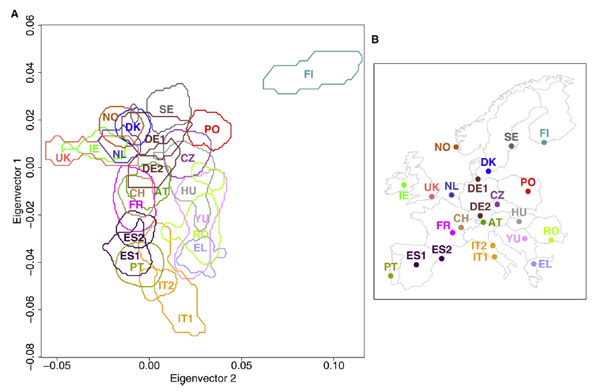I’m a bit of a map geek and a big fan of using maps to convey information geographic and otherwise, so I’m starting a new series of posts – Map App of the Day. I’ll highlight either a mapping web application or an application of mapping in information design that’s interesting, innovative, or just plain strange.
The New York Times had a brief article about a new study of genetic relationships between peoples in Europe. The paper, by Lao et al., looked at genotype data from more than 2000 individuals spread throughout Europe. The map on the right shows the normal geographic map of Europe, while the one on the left maps the genetic relationships between countries.
Here’s a link to a larger version on Current Biology’s web site.
The genetic map is a great example of why you should always consider mapping to illustrate data with a geographic component, and why you should always consider breaking the rules a bit to get a good representation (most maps don’t show countries overlapping, for example).
This is also a great illustration of how permeable and impermanent national borders really are. It would be interesting to see the same analysis done with distinctive populations like the Basque in Spain and the Sami in Finland added.
This also brings up with two non-mapping issues about journalism and research. First off, the NYT article didn’t bother to actually link to the journal article, the researcher’s websites at their respective institutions, or any of the other places that readers would need to go to follow up on this paper or get more detailed information. Why not?
Second, when I searched for Current Biology I was delighted to see that the journal publishes everything online, available via regular Google search, rather than hiding behind some expensive and proprietary publication database. Open access is very cool.
